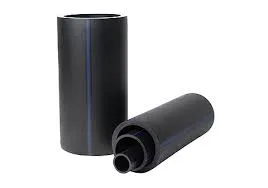Dec . 03, 2024 16:28 Back to list
PE Pipe Fittings Overview and Applications for Modern Plumbing Solutions
Understanding PE Pipe Fittings A Comprehensive Guide
Polyethylene (PE) pipe fittings have gained immense popularity in various industries due to their unparalleled durability, flexibility, and resistance to corrosion. These fittings are commonly used in applications ranging from water supply systems to gas distribution networks. This article explores the key features, types, advantages, and applications of PE pipe fittings, providing a thorough understanding of this essential component in modern piping systems.
What is Polyethylene?
Polyethylene is a versatile plastic that is known for its high strength-to-weight ratio. It is produced through the polymerization of ethylene, resulting in a material that can be used in a variety of forms. The two most common types of polyethylene are high-density polyethylene (HDPE) and low-density polyethylene (LDPE), with HDPE being the preferred choice for pipe fittings due to its robustness and durability. PE materials are recognized for their resistance to chemicals, UV radiation, and impact, making them ideal for outdoor and demanding applications.
Types of PE Pipe Fittings
PE pipe fittings come in various types, catering to diverse needs in plumbing and fluid transport. Here are some standard fittings
1. Elbows Used to change the direction of the pipe run, elbows come in various angles, such as 90 and 45 degrees. They allow for smooth transitions in piping systems, reducing turbulence and pressure loss.
2. Tees These fittings allow for the branching of a pipeline into two directions, facilitating the distribution of fluids. Tees can be configured in a variety of shapes, including straight and reduced sizes, adapting to different flow requirements.
3. Reducers Reducers are designed to connect pipes of different diameters, allowing for a smooth transition from a larger to a smaller pipe. They are essential in managing flow rates and ensuring systems operate efficiently.
4. Couplings Used to connect two sections of PE pipes, couplings can be either standard or compression types. They ensure a secure and leak-proof joint, contributing to the overall integrity of the piping system.
5. Flanges Flanges are crucial for connecting PE pipes to other materials or equipment. They provide a stable joining mechanism that can be easily disassembled for maintenance or repair.
6. Caps and Plugs These fittings are used to seal off the ends of pipes when necessary, preventing leaks and contamination in the system.
Advantages of PE Pipe Fittings
The benefits of using polyethylene pipe fittings are extensive
pe pipe fittings

- Corrosion Resistance Unlike metal fittings, PE pipe fittings do not corrode over time, ensuring longevity and reliability in various environmental conditions.
- Lightweight and Flexible The lightweight nature of PE fittings makes them easier to handle and install, reducing labor costs and time.
- Ease of Installation With a variety of joining methods available, including heat fusion and mechanical fittings, PE pipe fittings can be installed quickly and efficiently, minimizing downtime.
- Cost-Effective Though the initial investment may be comparable to other materials, the overall costs related to maintenance and replacement are significantly lower with PE fittings due to their durability.
- Environmental Impact PE is a recyclable material, making it an environmentally friendly choice compared to traditional metal or PVC fittings
.Applications of PE Pipe Fittings
The versatility of PE pipe fittings allows for a wide range of applications, including
- Water Supply and Distribution PE fittings are extensively utilized in municipal water supply systems, ensuring clean and pure water transport.
- Irrigation Systems Agriculture relies on PE fittings to create efficient irrigation systems that conserve water and enhance crop yield.
- Gas Distribution The natural gas industry benefits from the robust nature of PE pipe fittings, which provides safe and reliable gas transport.
- Sewage and Drainage Systems PE fittings are used in sewage systems due to their resistance to chemicals and ability to manage waste efficiently.
Conclusion
In conclusion, PE pipe fittings represent a substantial advancement in the field of piping solutions. Their lightweight, durability, and resistance to corrosion make them suitable for a multitude of applications across various industries. As technology advances and the demand for sustainable materials increases, the role of polyethylene fittings in shaping the future of plumbing and fluid transport systems is becoming increasingly vital. With their clear advantages, it is no wonder that PE pipe fittings are a preferred choice in modern engineering practices.
-
High-Quality PPR Pipes and Fittings Durable ERA PPR & PVC PPR Solutions
NewsJul.08,2025
-
Black HDPE Cutting Board - Durable, Non-Porous & Food Safe HDPE Plastic Cutting Board
NewsJul.08,2025
-
High-Quality CPVC Panel Durable HDPE & PVC Panels Supplier
NewsJul.08,2025
-
Double PE Welding Rod Supplier - High Strength, Durable & Versatile Welding Solutions
NewsJul.07,2025
-
High-Quality PVC-O Pipe Supplier Durable 75mm PVC Pipe & Connections Leading PVC Pipe Company
NewsJul.07,2025
-
HDPE Drainage Pipe Supplier – Durable & Corrosion-Resistant Solutions
NewsJul.06,2025

